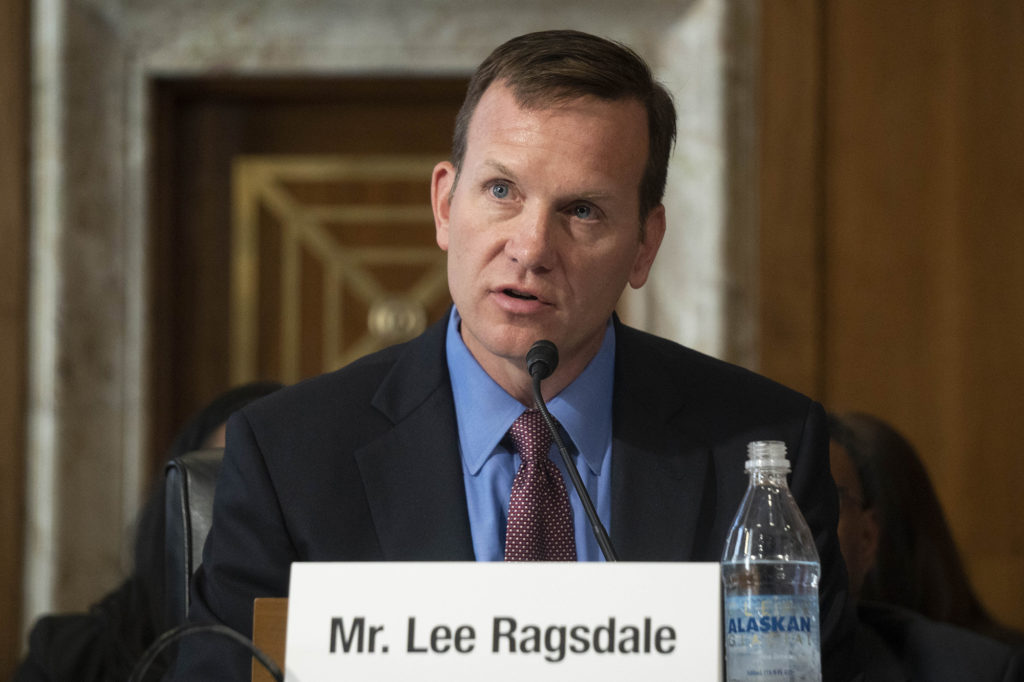
Electric cooperatives in North Carolina are using solar farms, demand-response programs, energy storage and microgrids to strengthen the grid—improving local resiliency while reducing carbon dioxide emissions and keeping rates low, a leader of the statewide cooperative told a Senate committee Thursday.
“Driven by service and inspired by innovation…electric cooperatives are building a brighter energy future for 2.5 million North Carolinians,” said Lee Ragsdale, senior vice president of grid infrastructure and compliance at North Carolina’s Electric Cooperatives.
“Beyond providing electricity, each of the 26 not-for-profit cooperatives is investing in its community and delivering new energy solutions to improve quality of life for cooperative members in 93 of North Carolina’s 100 counties.”
Ragsdale, who spoke at a hearing on energy innovation and economic growth, said North Carolina co-ops are driven by three key values: creating a low-carbon-emissions environment; integrating technology to make distribution grids more resilient, robust and flexible; and improving the efficiency of the overall energy sector through beneficial electrification.
“Together, we are creating an industry future that allows us to continue our mission of powering and empowering the people and communities we serve,” he told the Senate Energy and Natural Resources Committee.
Ragsdale said North Carolina’s co-ops have been leaders in developing microgrids, creating two demonstration projects designed to help the state’s tourism and agriculture industries.
The statewide cooperative worked with Tideland Electric Membership Corp. in Pantego to build a microgrid on Ocracoke Island, in the state’s Outer Banks, to help shave demand during high-use times and prevent prolonged blackouts after stormy weather. The microgrid runs on a generator, battery storage and solar power and uses smart thermostats and controllable water heaters to push consumer use to off-peak hours.
“The integration of supply-side and demand-side resources, with community involvement from the residents and visitors to the island, have made this a successful project,” Ragsdale testified.
The second microgrid project is a partnership between a hog farm, Butler Farms in Lillington, and Dunn-based South River Electric Membership Corp. It will provide power to the farm and surrounding homes during outages or maintenance affecting the main grid. It uses hog waste to produce electricity, as well as solar power and battery storage.
“We started with community solar, then added thermostats and water heaters and now have two functioning microgrids,” Ragsdale said.
He told the committee that early microgrid adopters, like co-ops in North Carolina, are essential to helping move the evolution of the grid forward.
“Not every cooperative has to do everything,” he said. “We share information, pilots, and research and development results.”
Ragsdale urged committee members to consider supporting a bipartisan bill by Sens. Amy Klobuchar, D-Minn., and Jerry Moran, R-Kan., that would provide grants and technical assistance to co-ops to encourage the use of microgrid and energy storage technologies. The bill, called the EASE Act, is modeled after a successful partnership between co-ops and the Department of Energy to bring solar technology to rural America.
“Cooperatives that receive funding and assistance under this program would then participate in a public awareness campaign to educate other cooperatives with a focus to share the lessons that have been learned; to assist in developing successful energy storage and microgrid models; and to highlight that barriers can be overcome,” Ragsdale said.
In response to questions from Energy and Natural Resources Chairman Lisa Murkowski, R-Alaska, Ragsdale said he thinks the most promising upcoming technology is energy storage, especially with batteries becoming more affordable.
“Energy storage is a game-changing technology; I think that’s what’s next,” he said.
Ragsdale said the one area that the federal government is not investing enough money in is rural broadband. Some of the most promising technology depends on access to high-speed internet, he said.
Listen to Ragsdale and other co-op experts discuss the evolving grid in a recent podcast episode:
Erin Kelly is a staff writer at NRECA.